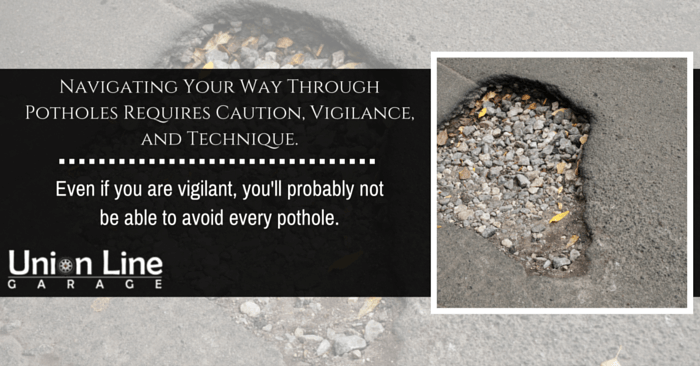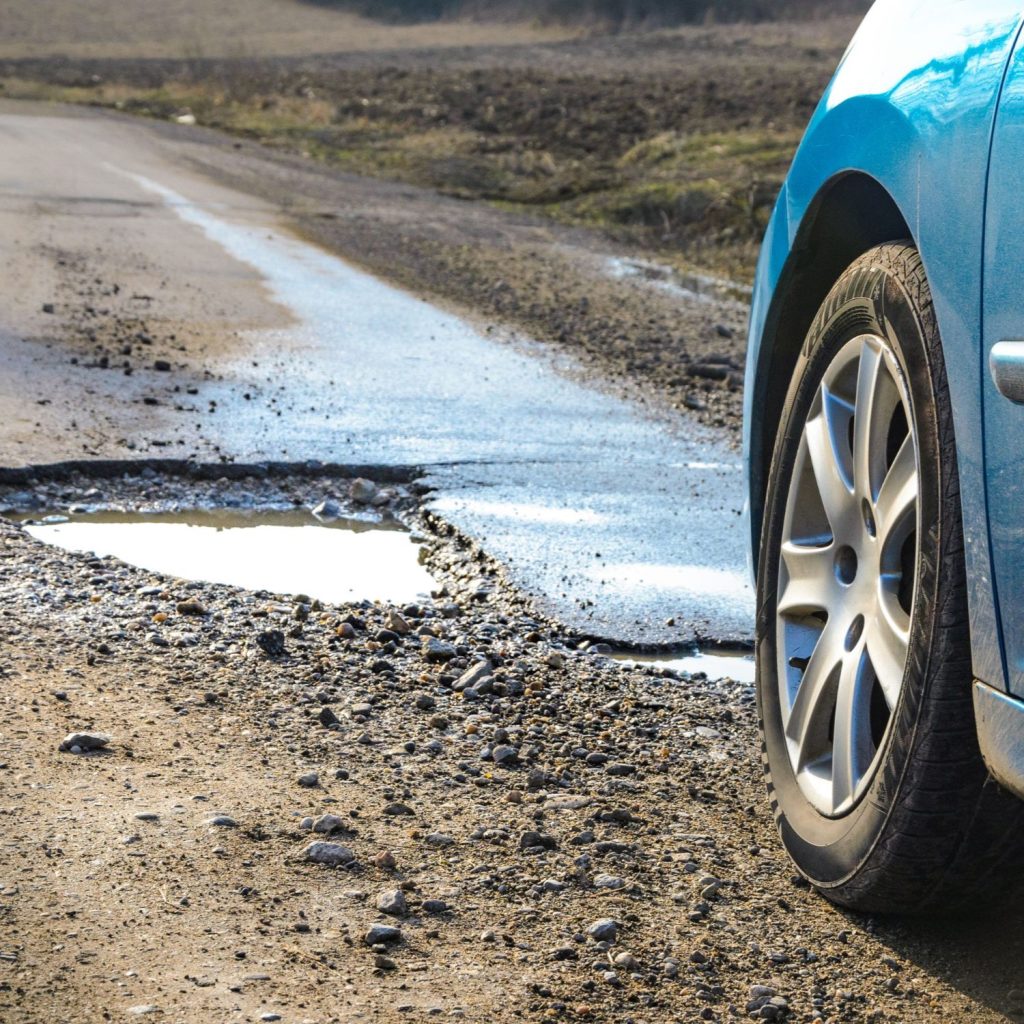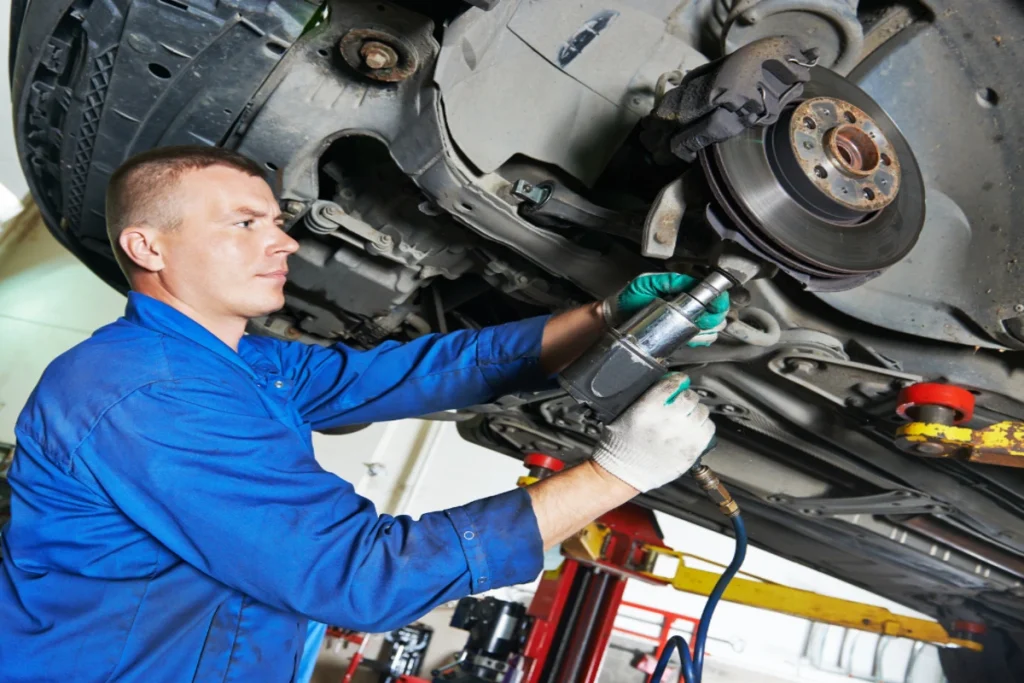Each spring, especially after a harsh winter, potholes begin to pop up. If you’re not careful, unexpected car-repair costs could pop up as well. If you drive over a pothole, you risk damaging your car’s tires, rims, steering-system alignment, shocks and struts, and even its engine and exhaust system. Repairing pothole damage can range in cost from $50 to more than $2,500. While collision insurance should cover some of the costs, it will likely not cover the entire cost and won’t prevent the inconvenience of being without your car while it is being repaired.

Record-Breaking New Jersey Pothole Year
In a typical year, New Jersey’s Department of Transportation (DOT) fills approximately 170,000 potholes. This year, the state expects to spend at least $4 million to fill around 300,000 holes. Apparently, Winter 2014-2015 was record-breaking not only in terms of the weather! In March, state officials announced a campaign to eradicate the vehicle-damaging holes. A team of 13 newly appointed “pothole killers” are hard at work using a new state-of-the-art machine to fill the holes, but the job will take time. The question isn’t “will I encounter a pothole?” The question is, “How can I avoid pothole damage to my car next time I encounter one?”
Tips to Reduce Car Damage under Poor Road Conditions
First and foremost, if you see a pothole, make every effort to avoid hitting it. That’s much easier to do if you are driving the speed limit and are not tailgating. It’s also much easier to do if you can clearly see the road in front of you. Make sure your headlights are working optimally and your windshield is clean. The most important step in avoiding tire and wheel damage from potholes is to ensure your tires are properly inflated and are not overly worn.
You’re Heading Straight for a Huge Pothole. Now What?
Even if you are vigilant, you’ll probably not be able to avoid every pothole. Here’s how to drive safely through potholes:
- Slow down;
- Release the brakes before impact so your suspension system can cushion the blow; and
- Straighten your steering wheel so you hit the hole squarely instead of at an angle.
If you feel the jolt of impact, visually inspect your tires and rims when you arrive at your destination. If you notice your vehicle seems to be bouncing or not riding as smoothly as usual, that’s a sign that your suspension may have been damaged. Bring your vehicle in to our shop and we’ll assess it.
Finally, keep in mind the DOT can’t fill potholes it doesn’t know about. To report a pothole on a state highway or interstate, simply call 1-800-POTHOLE. If you encounter one on a county road, use this list to find the phone number you’ll need to report it.
Avoiding potholes is best, but not always possible. If your vehicle has suffered pothole damage, we can repair it. Contact us at Union Line Garage and we’ll return your vehicle to pre-pothole condition.





